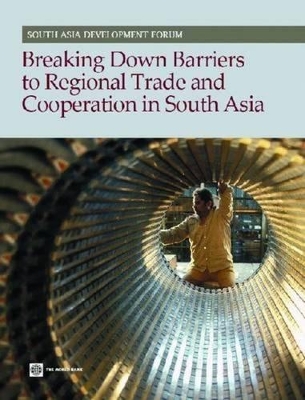South Asia Development Forum
2 total works
South Asia is one of the most dynamic regions in the world, but it is also one of the least integrated. While trade within South Asia has been growing, it has grown more slowly than trade with countries outside the region. The gains from greater integration through commerce, power trade, and river basin management could be enormous. Economic integration has also been shown to be a driver of economic convergence across states and countries. And by building a common interest across borders, it could provide a potential foundation for peace in one of the most volatile regions in the world. But the gains are asymmetric and the current obstacles to greater integration in South Asia are multiple. Tariff - and especially non-tariff - barriers undermine trade in goods and services. Poor infrastructure connectivity and institutionally weak power sector agencies prevent the flow of electricity across borders.
This book examines why the barriers to regional trade and cooperation have been so difficult to overcome, evaluates the potential economic and poverty reduction gains for greater regional integration, and proposes concrete policies, institutional strengthening measures, and investments that South Asian countries may pursue to tap into these unexploited benefits. Complementary avenues to regional integration include: collective action by businesses, especially in smaller countries, strengthening of supra-national institutions, and regional leadership by India.
This book examines why the barriers to regional trade and cooperation have been so difficult to overcome, evaluates the potential economic and poverty reduction gains for greater regional integration, and proposes concrete policies, institutional strengthening measures, and investments that South Asian countries may pursue to tap into these unexploited benefits. Complementary avenues to regional integration include: collective action by businesses, especially in smaller countries, strengthening of supra-national institutions, and regional leadership by India.
Institutional weaknesses limit the capacity of local governments to support efficient urbanization in developing countries. They also lead to the emergence of large developers with the clout to build entire cities. This paper analyzes the urbanization process when local governments are weak and large developers are powerful. Results from a non-cooperative game setting with minimal assumptions show that multiple equilibria can emerge depending on key institutional parameters of the model and the nature of the game, but all of them are inefficient. In this simple setting, increasing the capacity of the local government may not lead to better outcomes, because it may crowd out urban land development by the more effective private investor. Subsidizing the large investor can ensure efficiency, but it makes the rest of society worse off. Selling the rights to the city can be Pareto efficient, but only provided that the price at which the rights are sold are sufficiently high. However, more analytical and empirical work is needed before these analyses can be deemed relevant in practice. Competition among jurisdictions, time consistency challenges, and the social implications of private cities deserve special attention.

